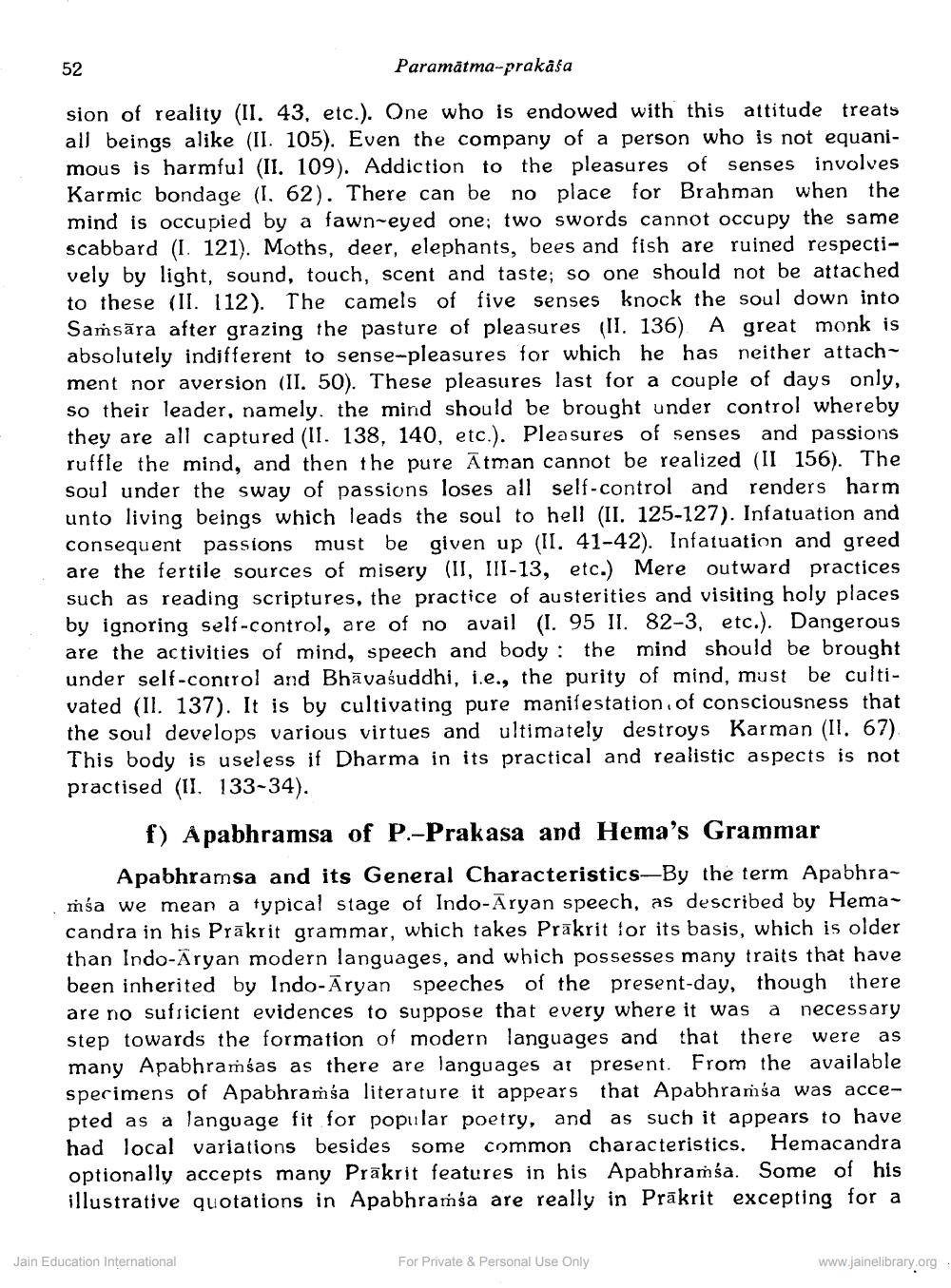________________
Paramätma-prakāla
sion of reality (II. 43, etc.). One who is endowed with this attitude treats all beings alike (II. 105). Even the company of a person who is not equanimous is harmful (II. 109). Addiction to the pleasures of senses involves Karmic bondage (I. 62). There can be no place for Brahman when the mind is occupied by a fawn-eyed one; two swords cannot occupy the same scabbard (I. 121). Moths, deer, elephants, bees and fish are ruined respectively by light, sound, touch, scent and taste; so one should not be attached. to these (II. 112). The camels of five senses knock the soul down into Samsara after grazing the pasture of pleasures (II. 136) A great monk is absolutely indifferent to sense-pleasures for which he has neither attachment nor aversion (II. 50). These pleasures last for a couple of days only, so their leader, namely. the mind should be brought under control whereby they are all captured (II. 138, 140, etc.). Pleasures of senses and passions ruffle the mind, and then the pure Atman cannot be realized (II 156). The soul under the sway of passions loses all self-control and renders harm unto living beings which leads the soul to hell (II. 125-127). Infatuation and consequent passions must be given up (II. 41-42). Infatuation and greed are the fertile sources of misery (II, III-13, etc.) Mere outward practices. such as reading scriptures, the practice of austerities and visiting holy places by ignoring self-control, are of no avail (I. 95 II. 82-3, etc.). Dangerous are the activities of mind, speech and body: the mind should be brought under self-control and Bhavaśuddhi, i.e., the purity of mind, must be cultivated (II. 137). It is by cultivating pure manifestation. of consciousness that the soul develops various virtues and ultimately destroys Karman (II, 67) This body is useless if Dharma in its practical and realistic aspects is not practised (II. 133-34).
f) Apabhramsa of P-Prakasa and Hema's Grammar
Apabhramsa and its General Characteristics-By the term Apabhramsa we mean a typical stage of Indo-Aryan speech, as described by Hemacandra in his Prakrit grammar, which takes Prakrit for its basis, which is older than Indo-Aryan modern languages, and which possesses many traits that have been inherited by Indo-Aryan speeches of the present-day, though there. are no sufficient evidences to suppose that every where it was a necessary step towards the formation of modern languages and that there. many Apabhramŝas as there are languages ar present. From the available specimens of Apabhramia literature it appears that Apabhramsa was accepted as a language fit for popular poetry, and as such it appears to have. had local variations besides some common characteristics. Hemacandra optionally accepts many Prakrit features in his Apabhramsa. Some of his illustrative quotations in Apabhramia are really in Prakrit excepting for a
52
Jain Education International
For Private & Personal Use Only
as
www.jainelibrary.org




